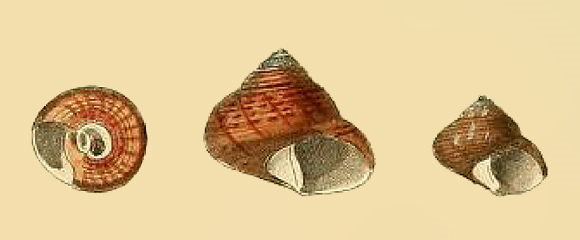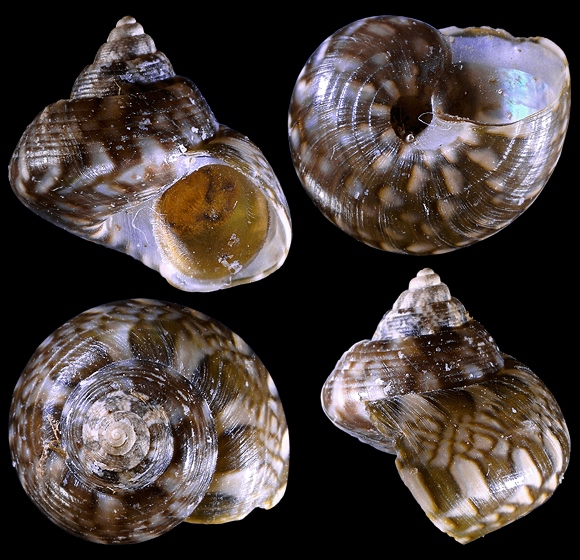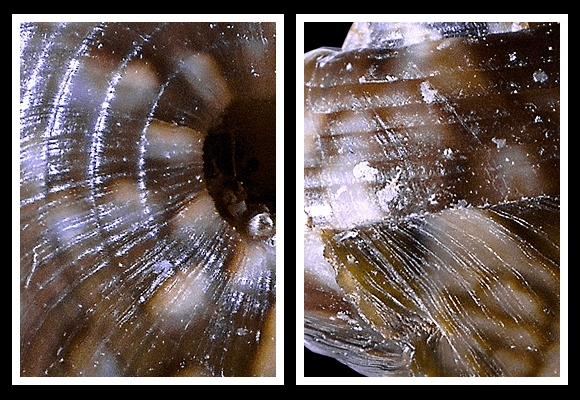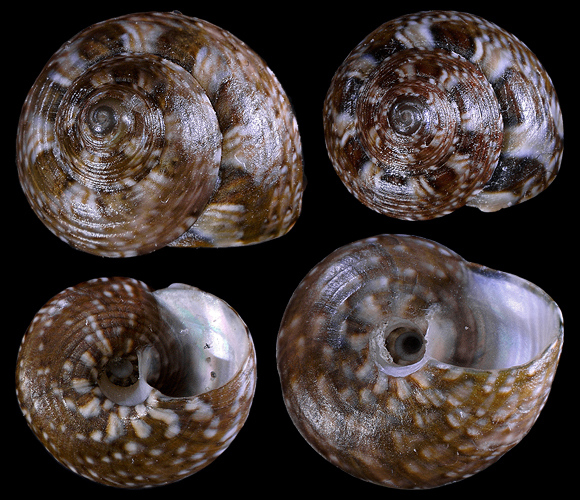
Original taxon: Trochus nebulosus.
Here is the description given by H. A. Pilsbry in Tryon’s Manual of conchology, structural and systematic vol. XI, Philadelphia 1889, p.204: « This species approaches near to T. umbilicaris L. in the structure of the umbilicus and the sculpture, but it differs in the smaller size, much more elevated whorls, the last less angular. The sculpture of the upper surface consists of 6 to 7 impressed spiral lines (not of elevated lirae), which become evanescent below the periphery, the base showing about 4. The color is reddish, with white spots, especially above and beneath the suture; the conic apex is blackish. »
The iconography of this species remains poor. Above, one of ther very few available drawings, given in H. C. Küster: “Die Kreiselschnecken oder Trochoideeen”, Systematisches Conchylien-Cabinet Bd.2:Abt.3, Nürnberg 1846, plate 35 fig.5.
The iconography of this species remains poor. Above, one of ther very few available drawings, given in H. C. Küster: “Die Kreiselschnecken oder Trochoideeen”, Systematisches Conchylien-Cabinet Bd.2:Abt.3, Nürnberg 1846, plate 35 fig.5.

This shell is not exactly reddish as expected by Küster, and the apical area is not dark, but shape and sculpture match the description. – Above and below: 3m deep, in Posidonia meadow, near the sailing club, Dhekelia bay, UK sovereign base, Lárnaka, SE. Cyprus. 9mm.


Beach drift, Kepez, Çanakkale, SW. Marmara Region, NW. Turkey. 10,5-13mm.